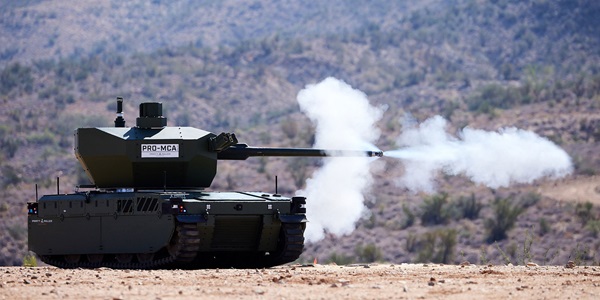Six high school students accepted an internship to learn about building airplanes.
Record Breaking Rocket Boosters
Powering the Future of Space Launch Missions
By Trevor Clingman
Two of Northrop Grumman’s extended length, 63-inch-diameter Graphite Epoxy Motors (GEM 63XL) etched their place in history in January 2024, when the 72-foot-long solid rocket boosters (SRB) helped power the successful inaugural flight of the Vulcan rocket. On their first flight, the rocket enhancing boosters delivered nearly 850,000 pounds of thrust — providing 40% vehicle’s total thrust at lift-off — enabling greater payload capacity and making them the longest monolithic SRBs ever flown to date. That mission aimed to place the first commercial lunar lander on the surface of the moon as part of NASA’s Commercial Lunar Payload Services initiative to deliver science and technology to the lunar surface that will help prepare for the next generation of explorers.
The GEM family of rocket motors have served to enhance the lift capabilities of rockets to launch critical national security, defense, commercial and civil space missions for more than three decades.
"The thrust provided by GEM boosters will help enable space launch missions that protect citizens around the world, advance human exploration and accelerate commercial space opportunities," said Bret Baldwin, Northrop Grumman director of GEM 63/XL programs.
Our fifth-generation GEM 63XL will continue to support some of the nation’s most important space missions in this decade and the next as the largest, most powerful and efficient GEM booster.
Powering Future Space
The additional thrust provided by GEM boosters increases the lift capability of launch vehicles and enables launch providers and payload developers to place heavier, more capable payloads into desired orbits.
“Mass is king in space, and a major advantage of SRMs is their ability to provide large amounts of thrust in relatively compact designs,” said Rob Gonzalez, Northrop Grumman senior director of commercial programs. “Because you have less joints with a monolithic design, you get a better performing motor that’s not as heavy.”
For a typical low Earth orbit (LEO) mission, a Vulcan rocket with no boosters can lift approximately 10.8 metric tons. With six GEM 63XL boosters mated to the Vulcan rocket, the maximum possible, it can loft 27.2 metric tons, which is equivalent to one fire truck, into LEO — increasing the vehicle’s payload capacity by over two and a half times.
Protecting What Matters Most
For the National Security Space Launch (NSSL) program, “mission success” has been priority number one since its inception in 1994. Today, the program and rockets used to launch these missions, including those supported by our solid rocket boosters, demonstrate an unmatched reliability, maintaining a 100% mission success rate.
“NSSL missions, many of which have been supported by GEM boosters or will be in the future, are important for people all across the globe,” explained Rob. “These payloads protect our country and troops, support national defense objectives and help us better understand our planet.”
These launches support military and intelligence communities with the deployment of global positioning system satellites, earth observation and military research satellites, weather satellites and missile warning and reconnaissance satellites.
Giving a Boost
“Sending lunar and other planetary orbiters and probes into space so we can improve our understanding of the solar system is no small feat,” said Bret. “Our boosters are helping usher in the next era of space exploration.”
Over the next decade, GEM 63XL boosters will support a variety of commercial missions, including the deployment of one of the largest satellite constellations ever. The low earth-orbiting Project Kuiper constellation will deliver affordable, high-speed broadband services to communities around the world who have historically lacked internet access.
“Supporting missions that protect our country, advance space exploration and impact so many people all around the world is a tremendous source of pride for our teams,” said Rob. “The GEM 63XL will help shape the future of space.”
Learn more about Northrop Grumman’s commercial rocket motors and our commitment to solving the toughest problems in space. If you’re interested in helping us define possible, explore what life is like at Northrop Grumman and how to launch your career here.
Solving the Toughest Problems
Whether you want to design next-generation aircraft, harness digital technologies or build spacecraft that will return humanity to the moon, working at Northrop Grumman means you’ll contribute to technology that’s transforming the world. Check out our career opportunities to see how you can help define possible.


